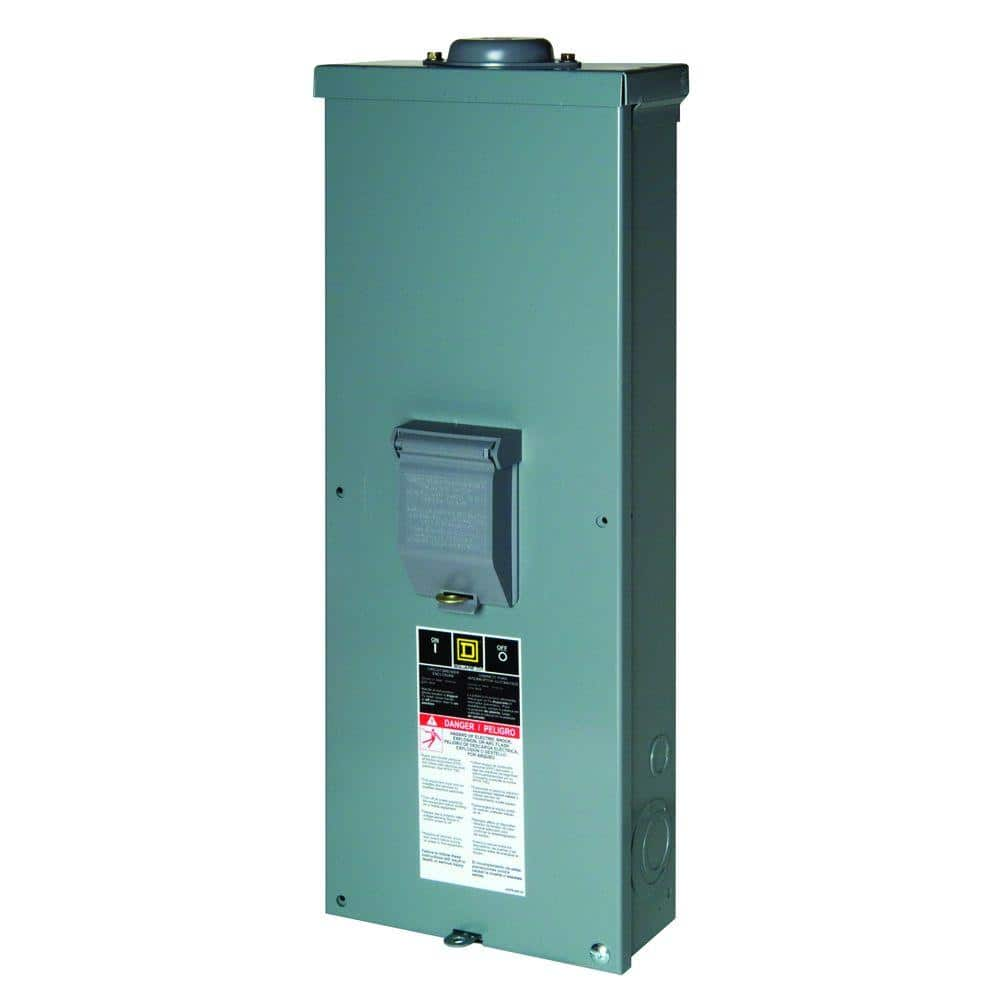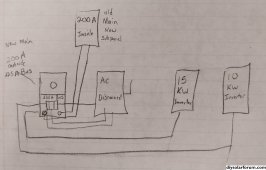Yes it will be a sixty and eighty amp breaker for pv. They would be in the 200A combination meter/ panel (225a busbar) With a feed through lug powering a two hundred Amp panel inside the home which used to be the main panel. With that set up the combination Meter breaker box would be considered the main. Both panels would have a two hundred a main breaker
A 225A busbar fed from 200A main breaker and 60 + 80 = 140A PV breakers has 340A of sources, 170% of busbar rating.
I understand that is OK for a PV aggregator panel, only PV breakers no loads.
Texican's 400A panel suggestion is good ($$$)
My thought is that the main combo meter could not have more than 200 amps going through the bus bar Because the inside 200 amp sub panel Would trip. The main panel would either be drawing from the grid or solar production would be back feed to the grid.
You are correct that if there was exactly one load breaker (or tap), current through the busbar would be limited to OCP value of that tap, or OCP on PV, whichever is greater. But I don't think code allows single load breaker exception to 120% rule. Maybe it does.
If you're using lugs at end of bus, rather than middle of bus, bus could carry 200A + 140A to the end lugs, which is too much (for bus as well as wires). Of course, current limited by OCP on sub panel, assuming the wires only go to one panel.
If you put a 150A main breaker in combination panel, you could put in two 60A PV breakers for a total of 270A, fitting 120% rule.
My present setup has a service entrance box with meter and 200A main breaker. It has several 4 or 5 hole Polaris connectors to branch out to 200A sub panel with main breaker and 100A fused disconnect for my battery inverters (which are AC coupled to PV inverters), and has several holes left for further expansion.
Polaris has a current rating like 400A. The wires are good for 200A or 125A depending on where they go, are in conduit, and hit OCP within 5'. When there is 200A + 100A = 300A of OCP feeding Polaris, there may be a rule on how far and where undersize wires can be routed before OCP. After all, some houses have meter only at service entrance and unfused wires to panel with main breaker inside house.
My next property I'm planning, I've selected a meter box and separate 200A only box to do the same thing.
The Square D by Schneider Electric QO 200 Amp Outdoor Circuit Breaker Enclosure includes a two-pole QOM2 frame sizes circuit breakers 100-225 amp capacity for use as an exterior disconnect. This breaker
www.homedepot.com
With a main breaker only box, all panels can be fed directly from grid. With interlocks, they can be switched to be fed by an inverter instead, with inverter fed by grid.
My inverter has only about 100A pass-through, so 100A or 125A branch circuit breaker interlocked as "generator" input is sufficient.
If someone uses SolArk or another with 200A pass-through, there aren't as many options for 200A "generator" and 200A straight from grid.
A 200A transfer switch is one way. I think there is a 200A (4 pole ganged) branch breaker for Homeline that looks like it would work with interlock (because it has 4 separate poles ganged externally). I'm using QO, which has up to 125A 2-pole that can interlock. The 200A (4-pole ganged) has single handle located where it doesn't work with standard interlock.





